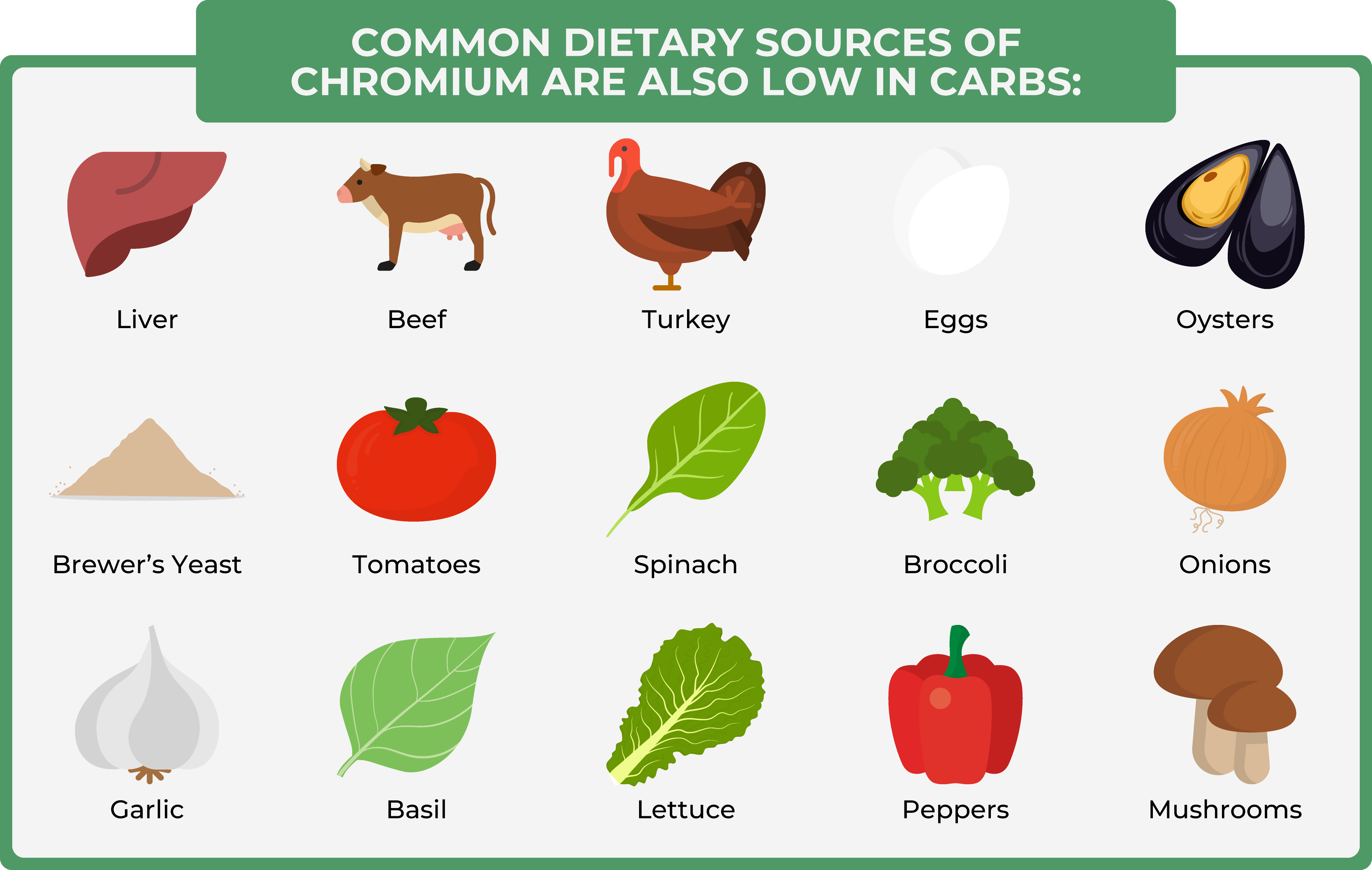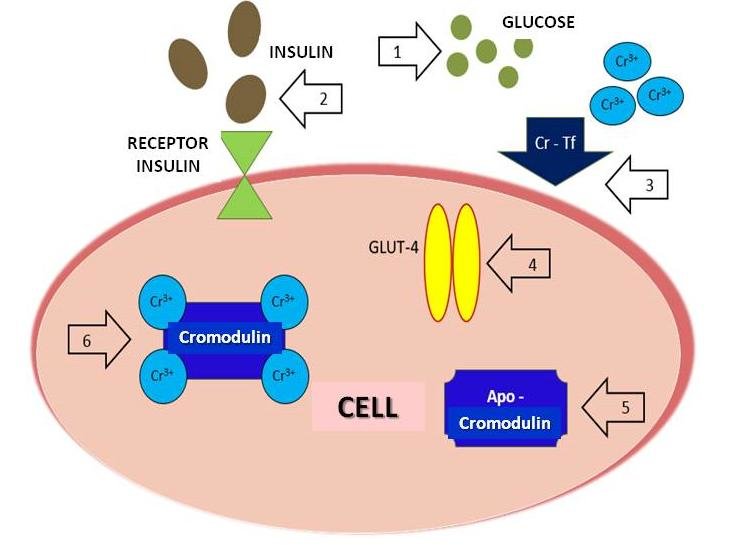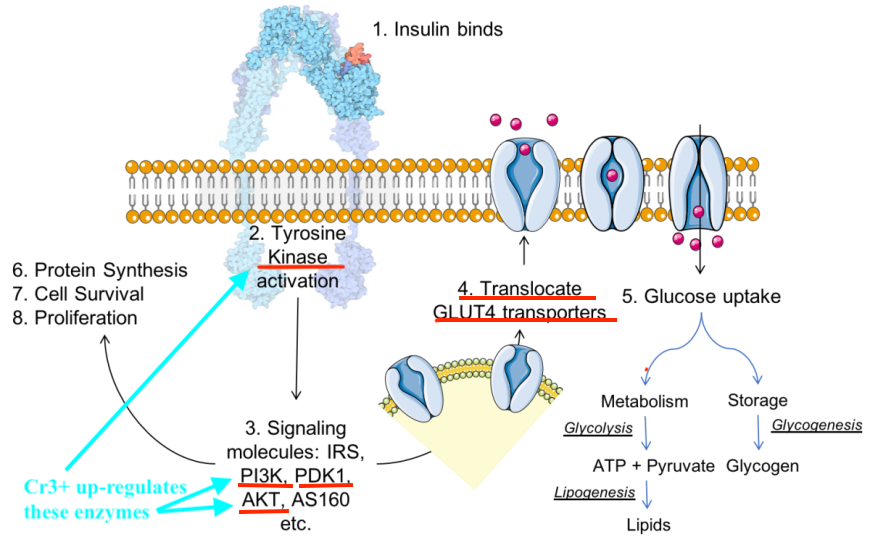
Chromium (Cr) is a metal found in a ubiquitous fashion amongst soil, water, and air (Gropper, Smith, & Carr, 2018). Several oxidized states of Cr exist, however, researchers consider Cr3+ the most biologically relevant form (Vincent & Lukaski, 2018). Cr3+, also known as trivalent chromium, is the most stable of the oxidized forms often bound to sulfur, oxygen, and nitrogen and is thought to enhance the effects of insulin (Vincent & Lukaski, 2018). As such, the following will consider the same.

Cr3+can be found in foods such as meats and grains though Grooper et al. (2018) indicated that there is variability among food groups. Some spices also contain Cr3+such as cinnamon, turmeric, bay leaves, and cloves in addition to multivitamins (Gropper et al., 2018). It is thought that Cr3+ potentiates the action of insulin though the mechanism remains unclear. Researchers postulate that Cr3+ binds with an oligopeptide; a substance made of glycine, cysteine, and aspartate also known as apochromodulin (Gropper et al., 2018). Once four Cr3+ ions bind with apochromodulin, the subsequent and newly formed complex called chromodulin; a substance which enhances kinase activity within a cell after insulin has attached to the cellular receptor.

Enhancing kinase activity within a cell is important since kinase facilitates movement of GLUT 4 transporters towards the membrane surface (Gropper et al, 2018. Such translocation is essential as GLUT 4 transporters are responsible to attaching to, and moving glucose into the cell for metabolism and energy production. Additionally, some research on cells suggested that different forms of chromodulin have been shown to increase insulin gene expression thereby increasing insulin sensitivity. However, Cr3+supplementation has had conflicting results (Gropper et al. 2018).

Vincent and Lukaski (2018) indicated that measuring levels of Cr3+ also poses challenges as there are no agreed upon biomarkers of Cr3+ status. Despite limitations, adequate intakes of Cr3+ is recommended to be 35 µgand 25 µgup to 50 years of age for men and women, respectively (Gropper et al. 2018). Furthermore, Vincent and Lukaski (2018) stated that there were no definitive symptoms of Cr3+ deficiency, and that studies which did assess deficiency and its relationship to insulin resistance were limited (i.e., 10 case studies).
In conclusion, Cr3+ appears to help increase insulin sensitivity. However, mechanisms behind said improvements remain unclear. Furthermore, it remains uncertain if Cr3+ is a natural metal in food; Vincent and Lukaski (2018) indicated that said levels in food might be from processing of food in stainless steel equipment. Ultimately more research is required to determine influence of food processing on Cr3+ content in addition to understanding the mechanisms behind Cr3+ and insulin sensitivity.
References
Gropper, S. S., Smith, J. L., & Carr, T. P. (2018). Advanced nutrition and human metabolism (7thed.). Boston, MA: Cengage Learning.
Vincent, J. B., & Lukaski, L. C. (2018). Chromium. Advances in Nutrition, 9(4), 505-506.
-Michael McIsaac
